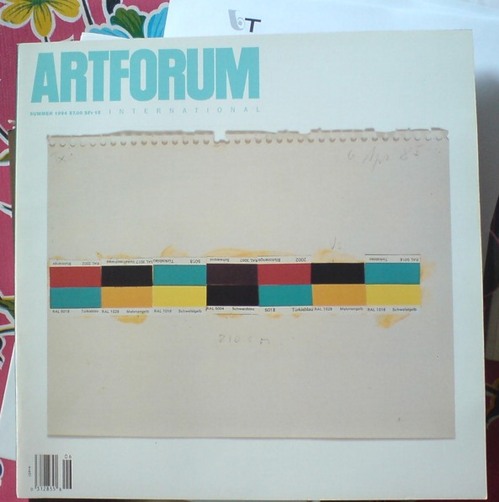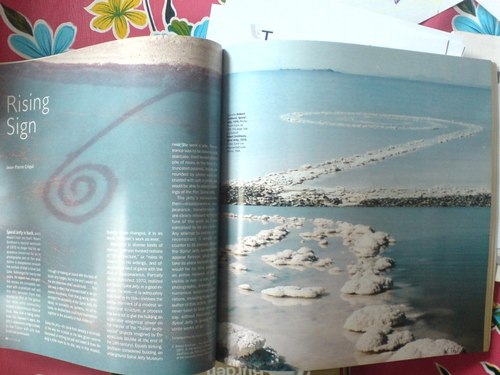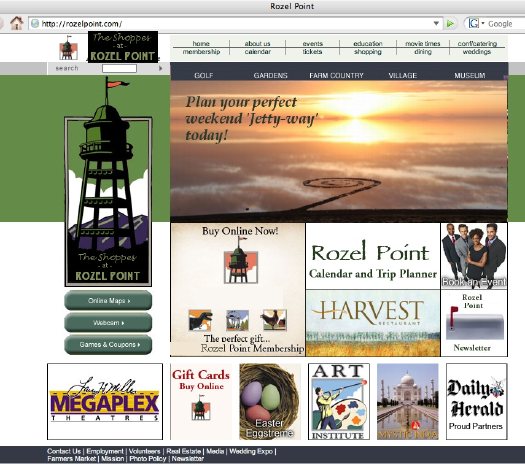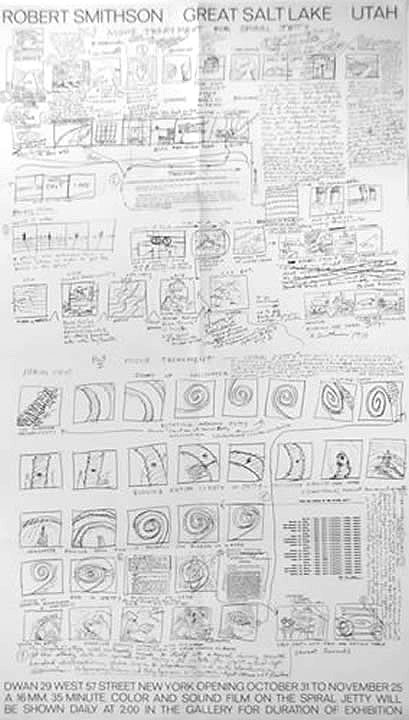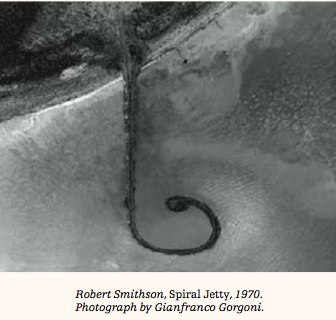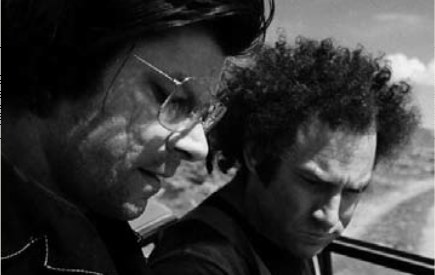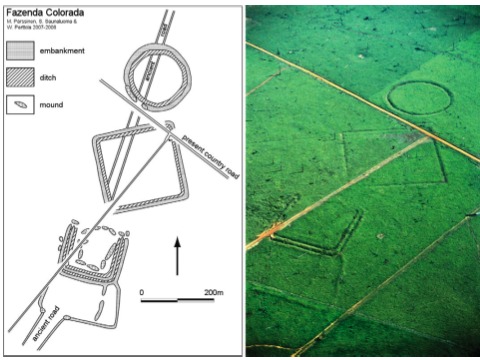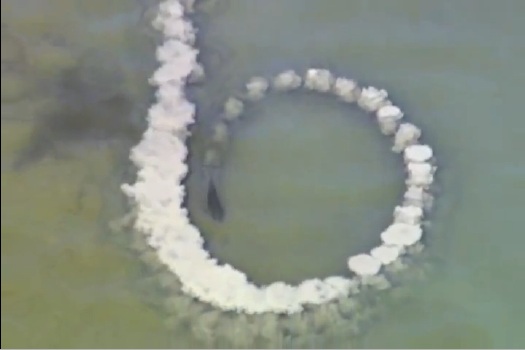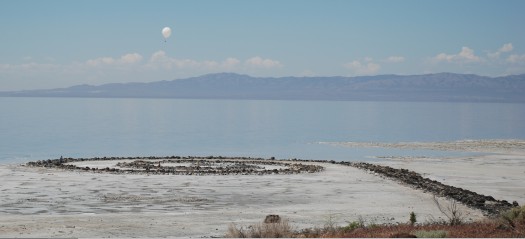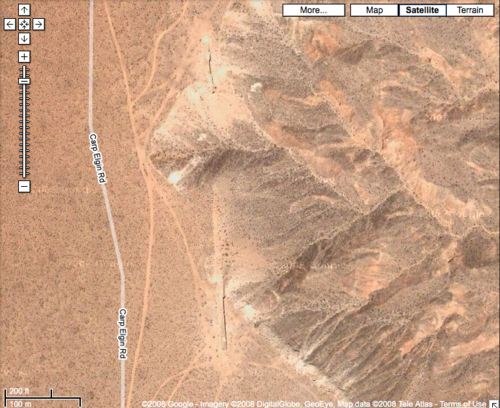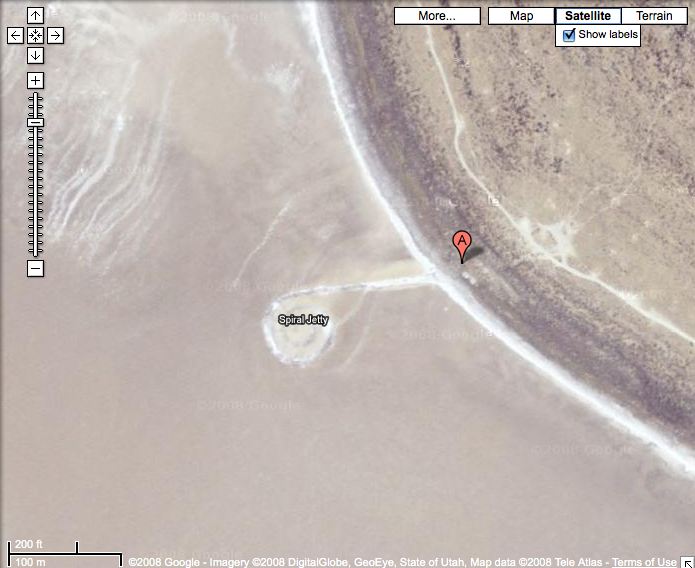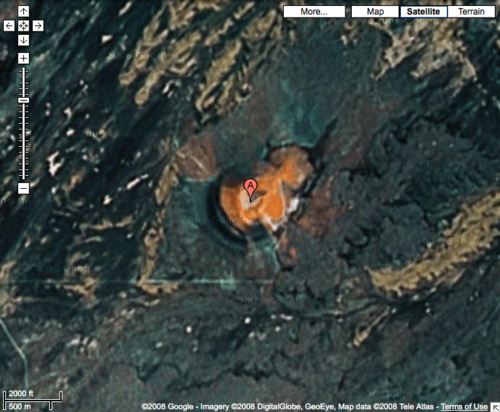I started poking around a bit on the making of story of Michael Heizer’s Double Negative. I’d known that it was commissioned by Virginia Dwan, the incredible gallerist who was also behind Smithson’s Spiral Jetty. Here’s a bit of her story from Michael Kimmelman’s 2003 visit with her:
She contracted him to do a work. He disappeared. Months later it was done. ”Double Negative” is a 1,500-foot-long, 50-foot-deep, 30-foot-wide gash cut into facing slopes of an obscure mesa in Nevada, a project that required blasting 240,000 tons of rock. ”It cost under $30,000,” Ms. Dwan says, ”pocket change for art today. I saw it only after it was finished. That’s how I operated. If I believed in the artist I trusted him.”
Then I came across an interesting 1972 Smithsonian interview Paul Cummings with Heizer’s earthwork colleague, Walter De Maria, two artists who romanced the desert together. I love the unselfconscious references to Kerouacking and creating an art movement. No way you could pull that off today:
WDM: Well, I drove across the country with Mike Heiser who I had been spending a lot of time with in ’67. So we had this chance to have the great American Kerouac experience of driving, you know, drive, drive and it never stops and four or five days later you can make it if you drive night and day. When I had first driven the country in the summer of ’63 from New York back to California, it was the most terrific experience of my life, experiencing the great plains and the Rockies, but especially the desert, you know. No, I would say the drive through Nevada in ’63 was the first time I was in the desert. And that memory was to come back in the crisis. Where is the best place in the world? It’s what I saw in Nevada. So it was a chance to go back to the desert for a second time and this time to start going out there often. We met flyers and we learned what it was like to fly small planes and drive trucks on these dry lakes and stuff.
…
We had a lot in common; we knew the whole situation so that gave us something to talk about and from that point it became interesting that he would change from shaped canvas painting to sculpture, and I was at the point of changing from steel sculpture into the land sculpture. So it was a move that we both wanted to make at the same time. We have both been developing the land sculpture simultaneously since that time, five years ago, just about until today. We’re really starting the sixth year. I mean, you know, we did it. It’s something that two people could do that one couldn’t, really, create a movement, because if one person does it, it is almost an eccentricity, but if two people are doing it and then they influence two others or three. It takes no more than three or four or five people to make a movement and then those people of course can have a hundred or two hundred or five hundred or a thousand following them. But the key idea is to develop two or three people. But it’s not necessary, sometimes three or four or five people could be working simultaneously. Like this guy Richard Long was working in England, walking around in the fields in ’68 also. That was completely independent simultaneous development…
The mention of flyers and deserts reminds me of Antonioni’s Zabriskie Point, which I’ve been watching lately. James Turrell is another flyer–and land art biggie, what with the Roden Crater and all. Don’t think I’ve heard much mention of that. Of course, there was Smithson and The Plane, but that wouldn’t be till ’73. Anyway, here’s more De Maria on one paradox of land art:
We’ve fought a lot of the same people; we’ve shared some of the same patrons, the same gallery like Dwan, Frederich for a while in Germany. Now he has another gallery. And all of our same problems remain, like to make earth art exist in the face of a lot of the same structural problems that still exist. Galleries are not set up to back major sculptures.
PC: Right.
WDM: There’s nothing set up to sell major sculptures. Museums do not commission major sculptures, even though they go off and spend five million dollars on an old painting. And not only that, a lot of people don’t believe that it really exists. There is still a lot of misconception that it exists only for the photograph and not for itself. It’s so far away that maybe everyone in the art world knows about our sculpture but not even one thousandth of one percent of a person has ever seen one of the pieces with is a very interesting conceptual and visible aspect of something that is massive. So, with all of these confusions and contradictions still inherent in the work, one could see another five years of good problems and hopefully some good solutions coming up. [emphasis added]
And it turns out that De Maria created his own trench-in-the-desert land art in 1969, Las Vegas Piece, which is just up the road from Double Negative. Or should I say “road.” CLUI says it’s located on Carp/Elgin Road, which, according to my father-in-law’s GPS navigation, is the same dirt road that passes alongside Double Negative.
De Maria talked about Las Vegas Piece in the Smithsonian interview. But when he reports Dwan’s account of visiting it, it is Kimmelman who waxes a little romantic:
It consisted of dirt paths he cut into the Nevada desert, going nowhere. In my mind — maybe Walter would say this is untrue — the desert setting, the heat and sun and emptiness were so important to the work because you were made to feel absolutely alone. First, it was a safari to find it, and when you did, you were separated from everyone else if you wandered down the paths, because the land was uneven, although it looked flat from far away, so you would find yourself on the far side of a rise, alone in the desert.
”I love the sense of isolation and solitude. But at the same time Walter’s art almost pushes a spectator away, as if he’s saying, ‘Stay back.’ ”
And so it goes that the foreboding environment of the desert itself moves to the foreground of the land art experience. It’s part of the mythology and story of the piece, told and retold without firsthand confirmation by the 99.999% of art world citizens who don’t actually go. Like this NY Times travel article starring Dave Hickey and his wife as daring land art tour guides:
Mr. Hickey’s wife, the curator Libby Lumpkin, had suggested that Chris and I drive into the desert to see Michael Heizer’s earth art piece from 1969-70, “Double Negative” (doublenegative.tarasen.net). A work I was curious to see, it was famously hard to find. She had us meet her at the Las Vegas Art Museum, where she is the consulting executive director, to get directions.
…
She warned us to take plenty of water. People had died, she claimed, after losing their way on Mormon Mesa, where “Double Negative” is carved. The Internet directions she’d handed us turned out to be more precise on paper than in the featureless landscape. After driving an hour and a half northeast to Overton, we followed a dirt road up the side of the mesa.
Rocks on top threatened to puncture the oil pan on the Neon, so I parked. We stumbled around, visoring our hands against the sun. Nothing in sight looked like art.
We flagged down two cars but no one had ever heard of the work. Discouraged and clueless, we were heading back to the city when we saw an S.U.V. The driver, an elderly man from Overton, had been to “Double Negative.” He pronounced it a “tax dodge,” but agreed to lead us there anyway.
Now I want to go back and see what’s up with De Maria’s Las Vegas Piece, but not only is CLUI’s coordinate map hopelessly vague [“The site is 37 miles down the road, off another small trail.”], not even they can be bothered to confirm its continued existence. All they say about it is, “Apparently, no longer visible.”
